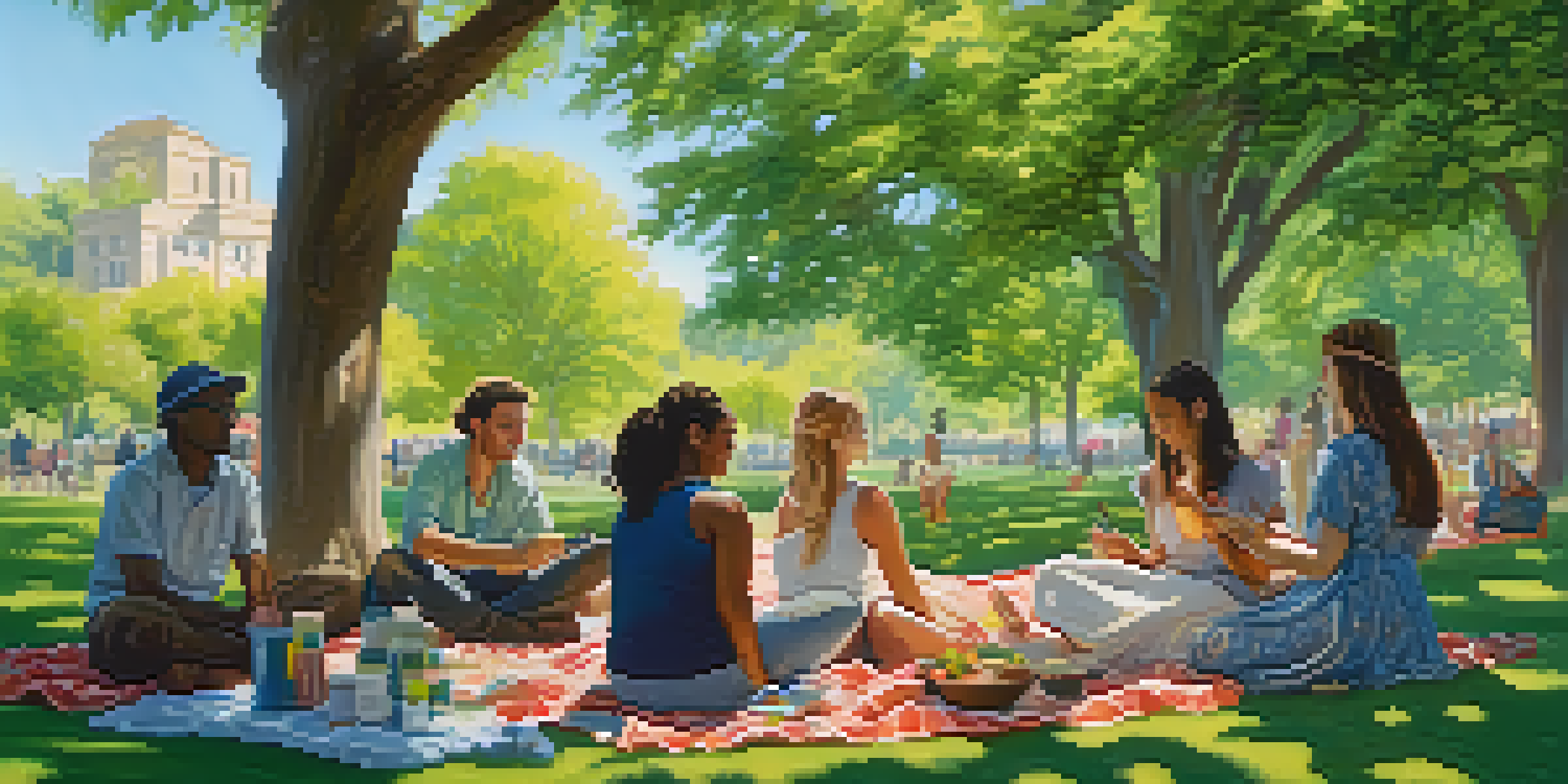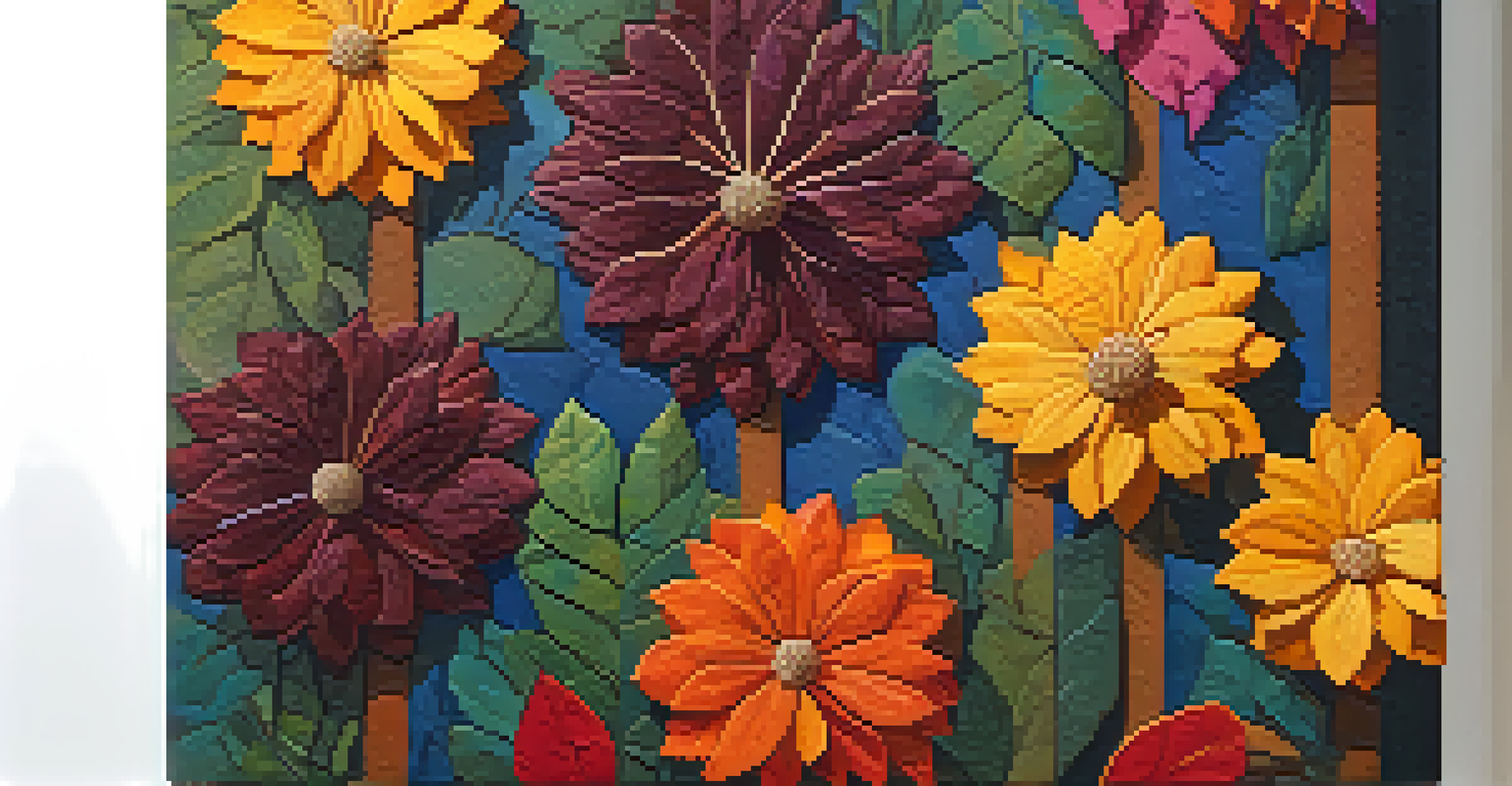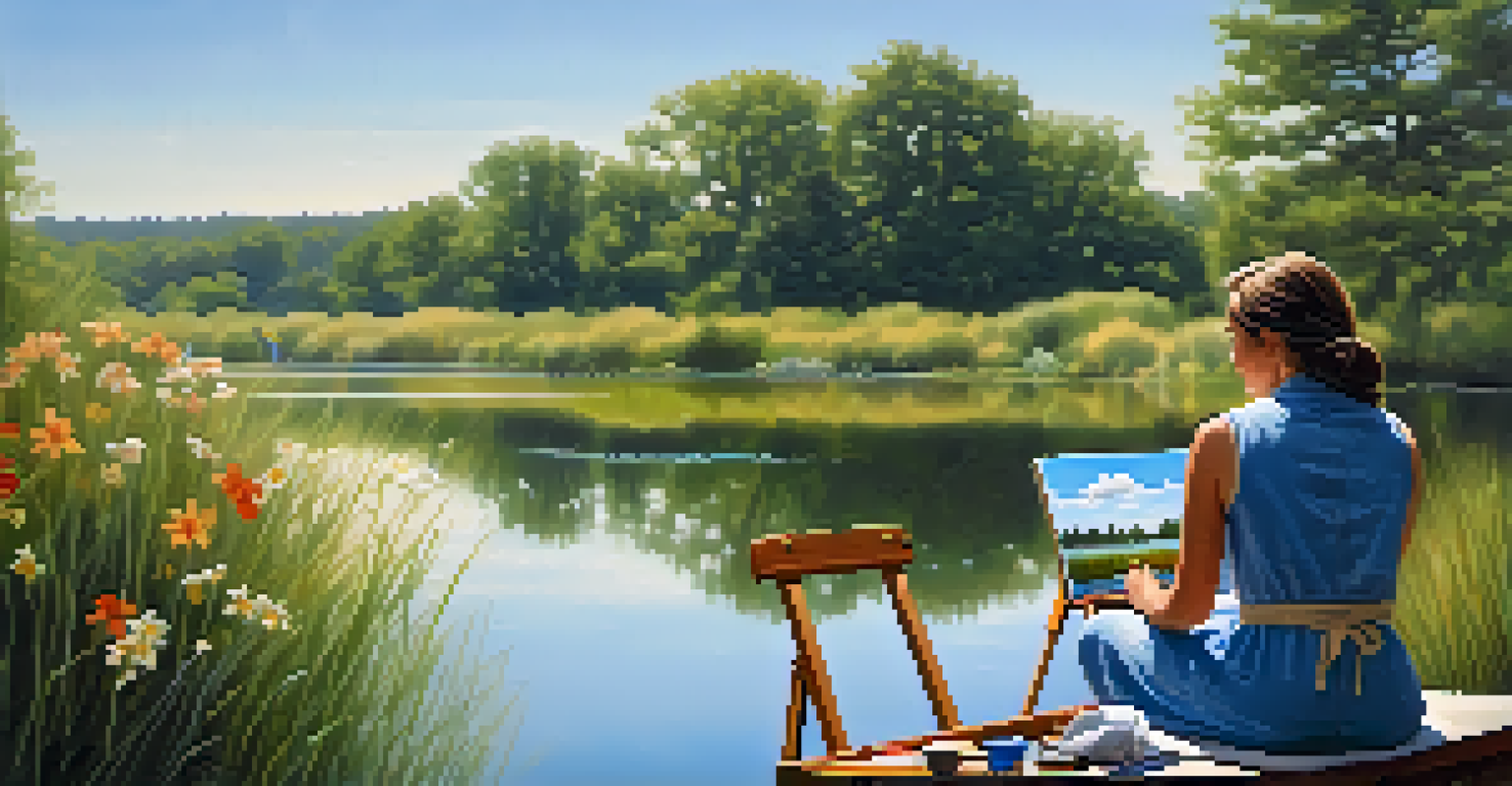Incorporating Nature in Painting Therapy for Mental Wellness

Understanding Painting Therapy and Its Benefits
Painting therapy is a creative approach that uses art to improve mental health. By engaging in the act of painting, individuals can express emotions, reduce stress, and enhance their overall well-being. It serves as a powerful outlet for those who might struggle to articulate their feelings verbally.
Art enables us to find ourselves and lose ourselves at the same time.
This form of therapy is particularly beneficial for people dealing with anxiety, depression, or trauma. The act of creating art allows for a sense of control and accomplishment, which can be incredibly empowering. Plus, the therapeutic benefits of art often extend beyond the session, positively influencing daily life.
Incorporating nature into painting therapy can amplify these benefits, as natural elements can evoke feelings of calmness and serenity. The combination of artistic expression and the beauty of the outdoors creates a unique therapeutic experience.
The Healing Power of Nature in Mental Health
Nature has a remarkable ability to promote mental wellness. Studies have shown that spending time outdoors can reduce stress, lower blood pressure, and improve mood. This connection to nature can enhance the therapeutic effects of painting, making the experience more immersive and restorative.

Incorporating natural scenery into painting practices encourages individuals to observe and appreciate their surroundings. This mindfulness can help ground them in the present moment, reducing feelings of anxiety and fostering a sense of peace. As they paint, participants can channel their emotional responses to the natural world, leading to deeper reflections.
Art and Nature Boost Mental Health
Painting therapy combined with nature enhances emotional expression and reduces stress.
Furthermore, nature provides an endless source of inspiration. From vibrant flowers to serene landscapes, these elements can spark creativity and allow for personal expression in their artwork.
Choosing the Right Natural Elements for Painting Therapy
When integrating nature into painting therapy, it's essential to select elements that resonate with the individual. This could be anything from flowers and trees to water bodies or mountains. The chosen natural elements should evoke positive feelings and inspire creativity.
In every walk with nature, one receives far more than he seeks.
For example, someone who finds solace in the ocean might benefit from painting seascapes, while another might prefer lush forests. The key is to allow personal preferences to guide the selection process, ensuring a deeper emotional connection to the artwork being created.
By focusing on what brings joy and inspiration, individuals can create not only visually appealing pieces but also work that reflects their inner experiences and emotions.
Techniques for Combining Painting and Nature
There are various techniques to blend painting with nature, such as plein air painting, where artists create artwork outdoors. This method encourages individuals to immerse themselves in their surroundings, capturing the essence of nature on canvas. It also allows for spontaneity and a direct connection to the environment.
Another technique involves using natural materials like leaves, flowers, or even soil in the painting process. These elements can add texture and depth to the artwork, making the experience both tactile and visual. Participants can explore their creativity by incorporating these materials in innovative ways.
Mindfulness Enhances Creative Process
Focusing on the present while painting outdoors fosters deeper emotional awareness and regulation.
Finally, guided sessions that focus on specific natural themes can help structure the experience, allowing individuals to explore their emotions and thoughts through their artistic expression. This combination of guidance and freedom can lead to profound insights.
Mindfulness and Painting: A Natural Connection
Mindfulness is a crucial component of both painting therapy and nature therapy. By focusing on the present moment, individuals can cultivate a deeper awareness of their thoughts and feelings. This practice can lead to greater emotional regulation and a more positive mindset.
When individuals paint outdoors or incorporate natural elements into their work, they engage in mindfulness naturally. They become attuned to the sights, sounds, and scents of their environment, which can enhance their overall experience. This connection can lead to a more profound understanding of their emotions and thoughts.
Integrating mindfulness techniques, such as deep breathing or guided imagery, can further enhance the therapeutic effects of painting in nature. These practices help individuals stay grounded and focused, allowing for a more enriching creative process.
The Role of Community in Nature-Inspired Painting Therapy
Engaging in painting therapy with others can foster a sense of community and support. Group sessions allow individuals to share their experiences, insights, and artwork, creating a space for connection and empathy. This shared experience can be incredibly validating and uplifting.
Nature itself can also serve as a backdrop for community activities. Group painting sessions in parks or gardens can encourage collaboration and inspire creativity. Participants can learn from one another and share techniques, making the process even more enriching.
Community Supports Healing Through Art
Group painting sessions in natural settings promote connection and shared experiences, enhancing mental wellness.
Moreover, building relationships with like-minded individuals can enhance mental wellness. The support and encouragement found in a community can help individuals feel less isolated in their struggles, promoting healing and growth.
Promoting Mental Wellness Through Nature and Art
Incorporating nature into painting therapy is not just about creating art; it's about enhancing mental wellness. By embracing the beauty of the natural world, individuals can find a sense of peace and inspiration that can be transformative. The combination of creativity and nature provides a holistic approach to mental health.
As more people recognize the benefits of this practice, communities and therapists are beginning to offer nature-infused painting sessions. These programs can cater to various groups, including those dealing with stress, trauma, or chronic illness, making art therapy more accessible.

Ultimately, the goal is to empower individuals to connect with themselves and their surroundings. By fostering a love for nature and creativity, painting therapy can become a vital tool in the journey toward mental wellness.